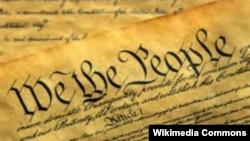One of the fundamental principles of the United States Constitution, the law of the land, is the balance and separation of power among the three branches of the Government: the Legislative, or law-making branch that is the U.S. Congress, the Executive branch which is headed by the President, and the Judiciary, which interprets the law at every level and settles legal disputes regarding the meaning and the application of the law.
The distribution of power among the three branches is meant to ensure that no one branch of the government is able to gain a disproportionate amount of power over the other two.
Each branch has separate and unique powers the others cannot impinge upon, but which are nonetheless subject to acceptance or rejection by the other two branches. This is how the balance of power is kept in check.
Thus, the Congress writes and enacts laws. It sets budgets and taxes and authorizes borrowing. It is the only body that can declare war. The Congress may override a presidential veto with a 60 percent vote.
Both the House of Representatives and the Senate initiate bills, or potential laws. The Senate also ratifies treaties, and confirms presidential appointments to federal posts.
The House of Representatives creates federal judgeships and courts except for the Supreme Court, and has the ability to start impeachment proceedings against federal officials, including the President.
Once proposed legislation passes through both Houses of the Congress, it goes to the President, who either signs the bill into law or vetoes it. In addition, the President is the Commander in Chief of all armed forces, has the power to make treaties and appointments to federal posts, and ensures that federal laws are executed throughout the country.
The Judicial branch of the Government, which includes the Supreme Court and all lower Federal courts, decides the meaning of laws, how to apply them to real situations, and whether a law breaks the rules of the Constitution.
“The accumulation of all powers, legislative, executive, and judiciary, in the same hands… may justly be pronounced the very definition of tyranny,” wrote James Madison, the Father of the Constitution.
“The defect must be supplied by so contriving the interior structure of the government, as that its several constituent parts may, by their mutual relations, be the means of keeping each other in their proper places."














